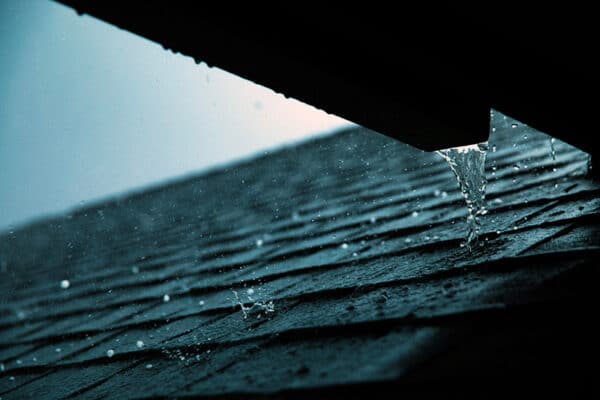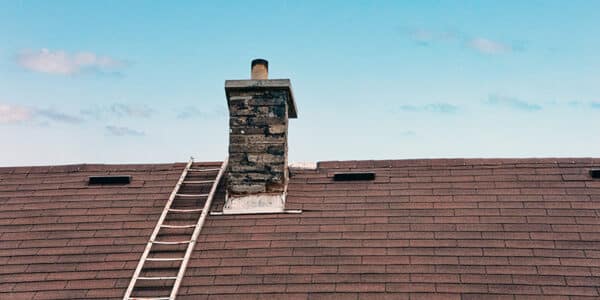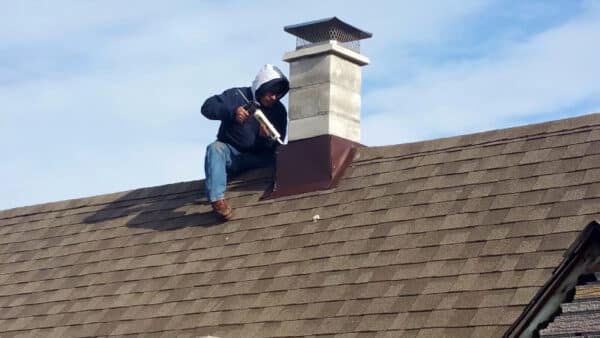How to Tell If You Need a New Roof

Your roof might be your home’s first line of defense from the elements.
As a result, it gets a lot of abuse.
Damage from weather, frolicking raccoons, or the occasional falling tree branch may be minor enough to fix with spot repairs, but sometimes you have to dig into your bank account and replace the whole roof.
We spoke to Nick Ely of Chicago Roofing Services, who walked us through how to determine when a replacement is the best option and how much that can cost.
“Even though a roof can be warrantied for, say, 30 years,” Ely tells us, “there’s still preventative maintenance repair that should be regularly done. Always keep the gutters clean. Periodically caulk and seal the masonry.”
But sometimes your roof damage is beyond the reach of mere maintenance. Below, we’ll dive into seven signs that you need a new roof––some of which are easily visible, but many of which aren’t.

|
$1,000-50,000
Loan Amount
|
8.49-35.99%
APR
|
3–7 years
Terms
|
560
Minimum Credit Score
|
Disclaimer
Personal loans made through Upgrade feature Annual Percentage Rates (APRs) of 8.49%-35.99%. All personal loans have a 1.85% to 9.99% origination fee, which is deducted from the loan proceeds. Lowest rates require Autopay and paying off a portion of existing debt directly. Loans feature repayment terms of 24 to 84 months. For example, if you receive a $10,000 loan with a 36-month term and a 17.59% APR (which includes a 13.94% yearly interest rate and a 5% one-time origination fee), you would receive $9,500 in your account and would have a required monthly payment of $341.48. Over the life of the loan, your payments would total $12,293.46. The APR on your loan may be higher or lower and your loan offers may not have multiple term lengths available. Actual rate depends on credit score, credit usage history, loan term, and other factors. Late payments or subsequent charges and fees may increase the cost of your fixed rate loan. There is no fee or penalty for repaying a loan early. Personal loans issued by Upgrade's bank partners. Information on Upgrade's bank partners can be found at https://www.upgrade.com/bank-partners/.
7 signs that you need a new roof
If you’re trying to determine whether your roof is in need of some minor fixes or a complete overhaul, here are seven signs to look for.
1. Age and repair history
Of all the elements that can damage your roof, the most powerful may be time itself. “If your slope roof is approaching 20, 25, 30 years, then it’s time to replace it,” Ely says.
A “slope roof” is a roof at an angle, as opposed to a flat roof, which is parallel to the ground. Slope roofs are usually shingled, and they can be categorized as “steep-slope” or “low-slope.” (Exact distinctions can vary, but OSHA calls it “steep” if the pitch of the roof is above four degrees.)
Ely says past repairs can also be a sign that it’s time for a new roof. “A homeowner will tell me, ‘We’ve had some repairs done over the years.’ If you’ve got a roof that has had multiple repairs or attempted repairs, that’s a flag, too.”
Flat roofs, with a top layer that’s a waterproof membrane instead of shingles, are also common in Chicago. This type of roof can require replacement even more often—Ely says they’re “designed to last anywhere between eight and 15 years”—and can deteriorate faster without proper maintenance.
2. Interior water damage

If you see leaks or water stains inside your home, you have a problem that may have been building unnoticed for a long time.
“For a slope roof to leak on the interior side,” Ely tells us, “the water has to go through at least three to four layers of materials. It has to go through the initial shingle, then the felt, then the waterproofing material, which is like an ice and water shield, then the substrate, which is typically plywood, then the interior insulation, and then the drywall.”
“On a flat roof, it has to go through the membrane, the base sheet, which is like a vapor barrier, your insulation, your substrate, your interior insulation, then the drywall.”
“Standing water is very bad for a flat roof,” Ely cautions.
To get a good look at the layers, a roofing company may take a core sample. This involves boring into your roof with a core cutter tool to view a cross-section of the damage and determine if this is a repair job or a replacement job.
3. Mold growth
If there is water damage, mold may be the next big problem. A waterlogged roof makes an excellent breeding ground for interior mold.
And mold might be present even if you don’t see it inside the house yet. “That’s another real good reason why you want to take core samples,” Ely tells us. “It can reveal signs of mold.”
4. Shingle damage

“You want to look at the shingle itself,” Ely tells us. “Are there missing shingles? Are there damaged shingles? Are there shingles that are curling up?”
A missing shingle here or there can be replaced, but when the damage is widespread or recurring, it’s time to consider a new roof.
Ely mentions a specific kind of damage: missing granules. Granules are tiny pieces of crushed stone and minerals that form a protective surface for your shingles from UV rays or excessive heat.
Severe wind or hail can knock granules loose, as can walking on the roof or cleaning it with a power washer. Each shingle is coated with plenty of granules, so a little bit of loss is expected. But when enough of that protective surface is dislodged, the cracking and curling Ely mentions can set in.
“Shingles tend to last anywhere between 20 and 30 years,” he says, which happens to be the life expectancy of the roof they’re attached to. If your roof is that old and still has its original shingles, it may be time for a roof replacement.
5. Uneven roof
Whether your roof is sloped or flat, you may see areas that aren’t the shape they’re supposed to be.
“If there are multiple areas that have soft spots, low spots, or pitching issues,” Ely tells us, “and if the roof is old, with a lot of open seams or alligator cracks, then you want to replace that roof.”
“Alligator cracks” are large, rough cracks that resemble the hide of an alligator. They’re a sign that the roof has been dried out from too much sun exposure over the years. This can be a sign that the roof has outlived its purpose and needs replacing.
6. Missing or damaged flashing

Flashing consists of thin pieces of metal whose function is to divert water from connective areas of the roof (for example, around chimneys or skylights). “You want to make sure that all those flashing details are correct and holding up,” Ely tells us. As with shingles, missing or damaged flashing can be repairable, or they can be a sign of deeper problems requiring a new roof.
7. High HVAC bills
If you’ve been having a hard time keeping your home warm in winter and cool in summer, your damaged roof might be the culprit.
A good roof doesn’t just keep rain and snow out. It also keeps heat from escaping in cold weather and invading in warm weather.=
Energy Star, a program administered by the Environmental Protection Agency, estimates that roofing made with the right energy-efficient materials can reduce energy bills by up to 50%.
How often do you need a new roof?
As mentioned, with normal wear and tear, a slope roof can last 20-30 years, and a flat roof up to 15. In the meantime, spot repairs might do the trick.
“If you go up there and there’s only isolated deteriorated areas, then you could do a cutout,” Ely explains. “We just cut out the bad areas and then put a new roof system on top of the existing one. That’s called a re-roof.”
This is a less extreme option than a full replacement, and it “cuts down on labor and a little bit on materials,” resulting in a lower cost.
But after getting up on your roof, the contractor may recommend a replacement.
How much does a new roof cost?
“They’re averaging $20,000,” says Ely of his Chicago-based roof replacement projects. This Old House suggests a national average of $10,000, but mentions that the price can easily top $20,000. Architectural Digest suggests a range from $15,159 to $27,580, with an average of $21,054.
This figure can vary widely with size, materials, and geographical location. For example, Ely mentions that Chicago has particularly expensive disposal fees to haul away the old materials, which can be a factor.
How to pay for a new roof?
If you don’t have the cash lying around for such a major purchase, you have a few other options to pay for a new roof.
Insurance
If your home insurance covers roof damage, you may be able to get all or part of the cost covered. Know your policy inside and out, keep detailed records of the damage, and contact your agent promptly.
As Jeff Tucker, Indiana State Farm insurance agent, told us, “understand what you get for what you pay. Just because there’s a heavy storm does not mean you’re getting a new roof.”
Home equity options
With solid credit and enough equity in your home, you can pay for a new roof with a home equity loan, a home equity line of credit (HELOC), or a cash-out refinance. All three of these result in a new mortgage, and they have similar eligibility requirements, but they differ in how you receive your funding.
A personal loan through Acorn Finance
Your quickest roof replacement solution may be at your fingertips through Acorn Finance. Just enter your financial needs and answer a few questions, and within moments you can choose from a list of loans you’re pre-qualified for. The loans go up to $100,000, which should cover even a major roof replacement.
Once you make your selection and are approved, you can have the cash in your hands within days, which is especially valuable if your new roof is an emergency.
Make sure that roof over your head is in great shape. It’s protecting just about everything else you own.
Comparing options on Acorn Finance? See if you prequalify for a personal loan without impacting your credit score.
Just answer a few questions to get personalized rate estimates from multiple lenders.
